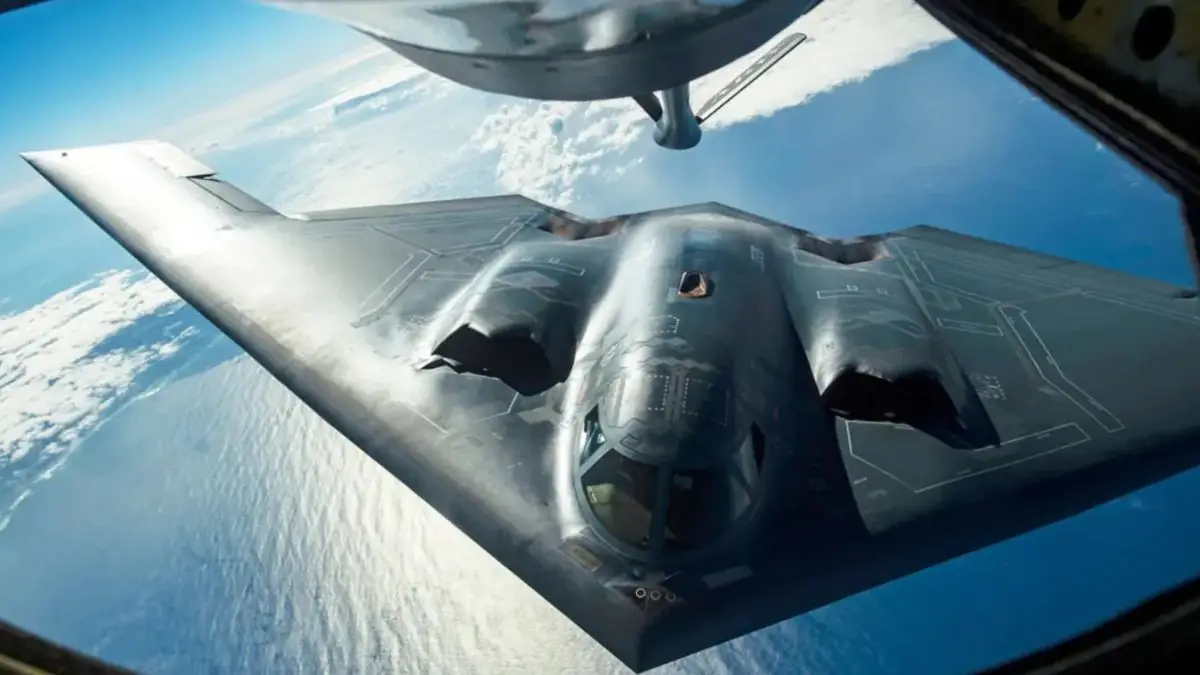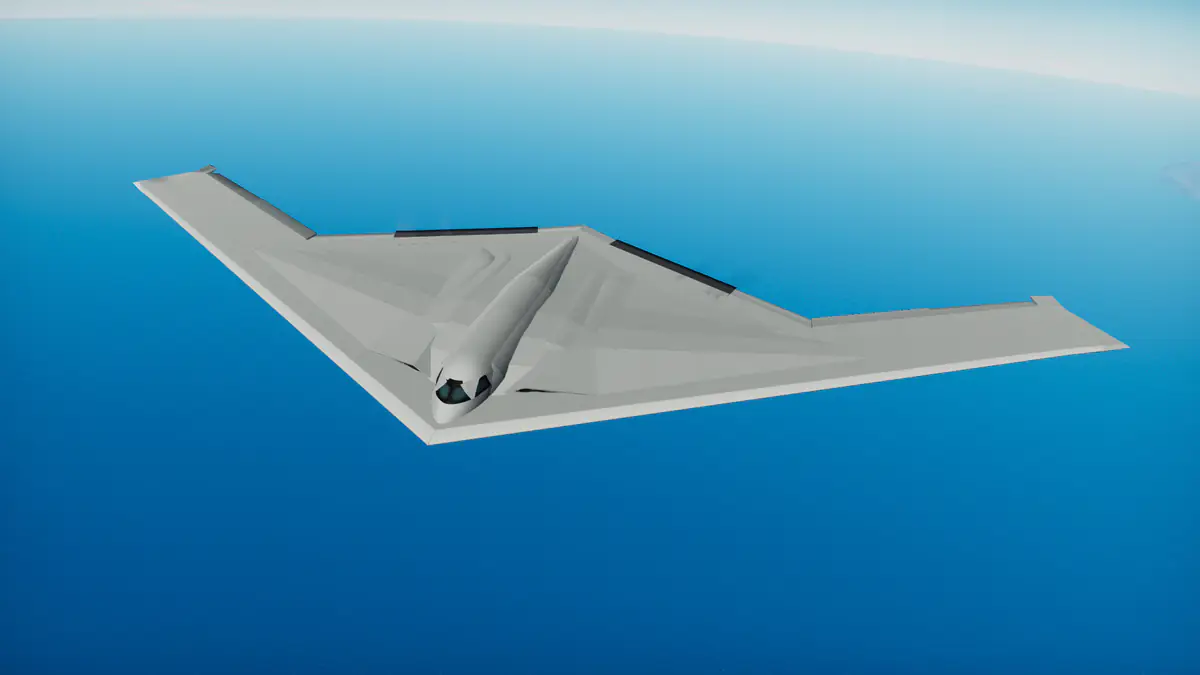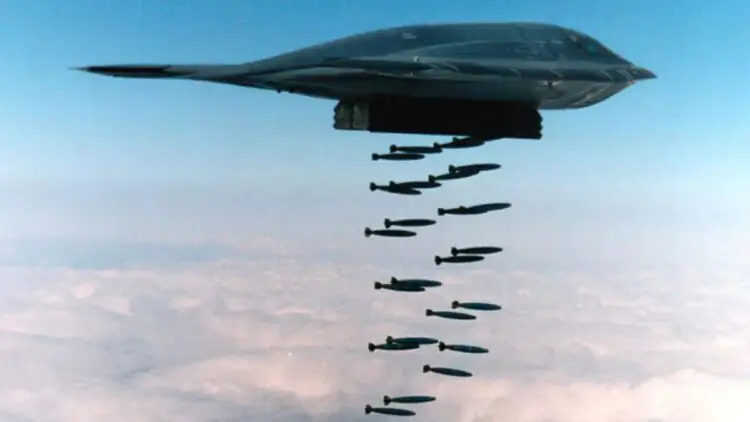About twenty years ago, a B-2 bomber left a smiling face made of bomb craters on the runway of a training airfield. This happened during a test flight at the Utah Test and Training Range (UTTR) when the B-2 ran out of containers used as targets after a single pass. The event clearly demonstrates the precision and destructive power of the upgraded American stealth bombers, capable of delivering a massive strike in a single combat sortie.
This story was shared by Air Force Major General Jason Armagost, who was part of the crew on that test flight. “I had the opportunity to fly an operational test mission where we transported 80 500-pound JDAMs and dropped them all on the UTTR airfield in just over 20 seconds,” he said. “It was an incredible sight. We even ran out of CONEX containers for the strike, so we ended up drawing a smiley face on the runway using the JDAMs.”

This test is detailed in a video, although it doesn’t mention the smiley face formed on the ground. The training airfield, built within the UTTR testing range, was 1.6 kilometers long and featured two simulated runways: one with a dirt surface and the other a simple desert track.
The site also included nine different target mock-ups: aircraft shelters, a helicopter pad, a control tower, a vehicle parking area, a multipurpose building, a hangar, an SA-6 surface-to-air missile site, a fuel station, and a launch pad for Scud ballistic missiles. Some of these structures – such as the shelters, control tower, multipurpose building, and hangar – were constructed from containers.

The B-2 flew at an altitude of about 12,000 meters and dropped all 80 JDAMs in a single pass. Each bomb, equipped with GPS guidance in its tail section, was programmed to strike an individual target, with all explosions occurring within roughly 22 seconds. At the time, JDAMs were still a new technology, and the B-2 had to be upgraded with specialized “smart” bomb racks for the test. Due to concerns about the safety of releasing bombs at such a rapid rate, 11 additional test flights were conducted before the final deployment of all 80 bombs on the training airfield.
Today, JDAMs – which combine an aerodynamic body with a new tail section containing a guidance system and specialized aerodynamic fins – are among the most widely used air-to-ground munitions in the U.S. Armed Forces.
Major General Armagost also highlighted the unique capabilities of heavy bombers. With a maximum payload capacity exceeding 27,000 kg, the B-2 features exceptionally large internal bomb bays. It remains the only certified aircraft capable of deploying the 13.6-ton GBU-57/B bunker-buster bomb in operational settings, carrying two of these bombs internally. These weapons gained widespread attention following their use during Operation Midnight Hammer targeting Iranian nuclear facilities.
“Bombers operate on a completely different level of capability,” Jason Armagost noted. “They work very effectively alongside fighters, which are used as a means of projecting power. But when fighters operate together with bombers, it’s a whole different matter.”

The ability of a single B-2 to destroy or significantly damage a large target, such as an airfield, in just one pass remains a considerable advantage, even as this edge diminishes with the rise of more advanced integrated air defense systems. For this reason, Armagost emphasized the importance of the upcoming B-21 Raider bomber. The U.S. Air Force plans to acquire at least 100 of these aircraft.
The B-21 will be smaller than the B-2 and have a lower payload capacity, but it could surpass the B-2 in effectiveness due to improved survivability. Equipped with modern, compact munitions like the GBU-39/B or GBU-53/B, the Raider may carry more weapons than the B-2. Additionally, it will be capable of launching these munitions from greater distances and potentially deploying small, precision drones operating in swarms.
Read also:
- Hydraulic Fitting Failure Causes B-2 Spirit Crash, Resulting in $300 Million in Damages
- U.S. Air Force to Acquire 75 More KC-46 Tankers, Skipping Competition for Next-Generation Refueling Aircraft
Source: twz








